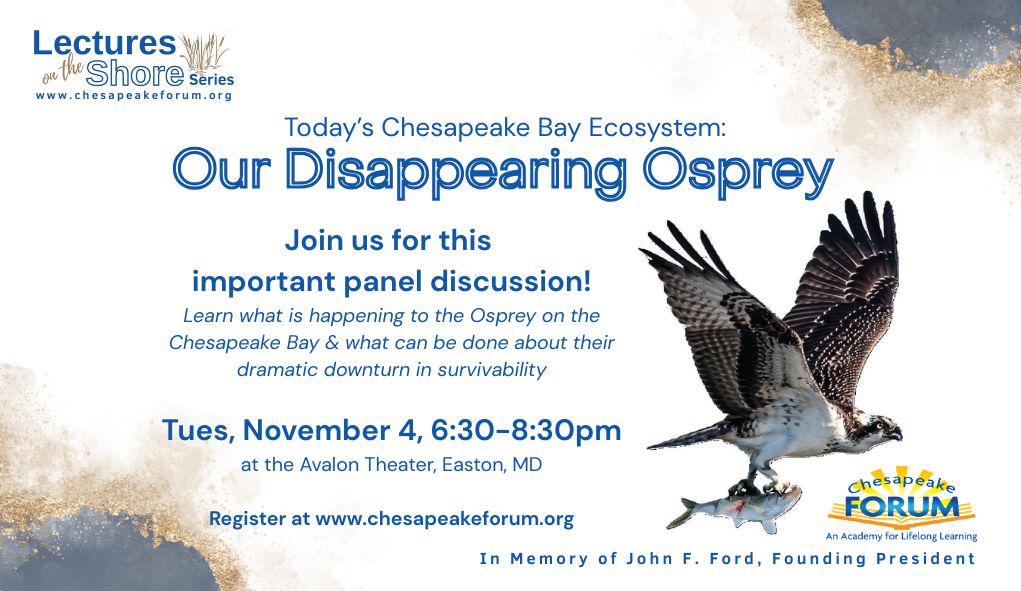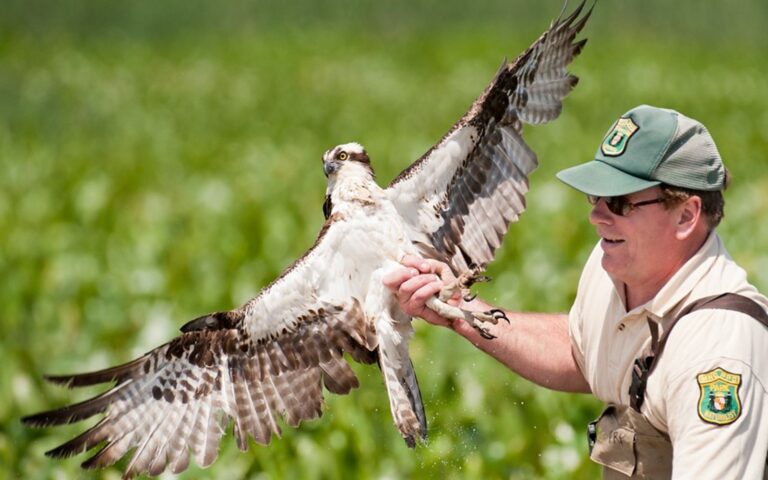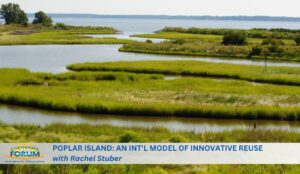The recent dramatic drop in the osprey population serves as an early warning for the health of the Chesapeake Bay. What does the future hold as fledging survivability reaches unsustainable levels?
Each spring, the skies above the Chesapeake Bay come alive with the return of ospreys—majestic raptors whose arrival signals the end of winter and the beginning of nesting season. But beneath this familiar seasonal rhythm lies a troubling story: the world’s largest breeding population of ospreys is showing signs of distress, and their struggle may be telling us something urgent about the health of the Bay itself.
In this eye-opening program, we’ll explore the complex relationship between ospreys and their primary food source, Atlantic menhaden—a small, nutrient-rich fish whose declining availability is triggering starvation, reproductive failure, and unprecedented reproductive shortfalls among nesting pairs of osprey. Drawing on the latest 2024 findings from USGS and the College of William & Mary’s Center for Conservation Biology (CCB), we’ll examine how salinity levels, warming waters, harvest pressures, and water quality may be contributing to this ecological unraveling.
Attendees will gain insight into:
-
- The biology and nesting habits of ospreys in the Chesapeake Bay
-
- Why ospreys are considered key indicators of environmental health
-
- The alarming decline in chick survival and egg-laying behavior
-
- The role of menhaden in sustaining osprey populations—and what’s threatening it
-
- Broader implications for conservation, fisheries management, and climate resilience
Whether you’re a birder, homeowner, environmental advocate, or simply curious about the delicate balance of life in the Bay, this course offers a compelling look at how one iconic species is sounding the alarm—and what we can learn from it.
A reception with hors d’oeuvres and adult beverages will take place for 30 min prior to the start of the program. After the formal presentation, the panelists will sit down to take questions from the audience. THERE WILL BE NO RECORDING OF THIS PROGRAM.
Tuesday | November 4 | 6:30 – 8:30pm | IN PERSON at the Avalon Theater in Easton | $60 | or | 7 – 8:30pm | LIVESTREAM | $40





